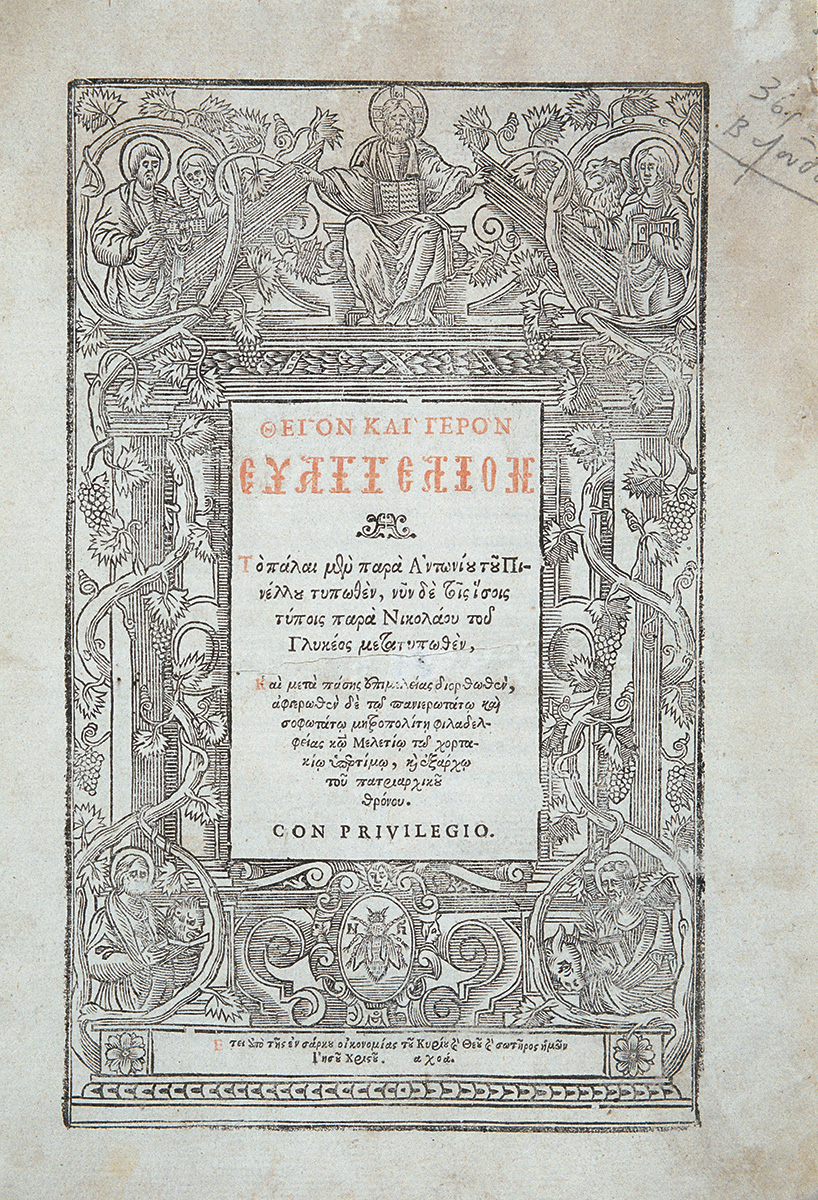Early Printed Books
The collection of early printed books of the Museum of Byzantine Culture numbers twenty-two (22) artifacts, whose majority is dated in the 19th and 20th centuries. The larger group constitutes the Gospels. The Greek publication dates back to the 17th and 19th centuries, while there is also a publication of the New Testament in the Karamanlite writing. The collection also includes Russian publications of Four Gospels, evangelaries, and a 19th century Interpretation of the Gospel Abstracts; all of them are velvet-coated, while sometimes their cover is made of gilded silver, often decorated with Christ’s Crucifixion and Resurrection scenes. In the category of liturgical books which are used all year round there are the Euchologion, which includes fixed portions of the services which are said on different occasions, and the Horologion (Book of Hours); a special group of the liturgical books are the Psalters and Menaia, which contain rites and the lives of the Saints. Works that in their content and use maintain further issues of the Orthodox worship are the publications containing the Divine Liturgy of the Presanctified Gifts and the Triodion. A rich collection of texts is the publication of the Old Testament in the translation of the Seventy. A special unit of texts constitutes the books of spiritual benefit, such as the Thesaurus of Damaskenos Studites the Thessalonian, or the Prison of the Five Senses; these guided the believers to prayer and spiritual life. Publications of heterogeneous scientific books, such as the History of the Earth by the Professor Meimar written in Russian, or the Studies of Christian Religion in Greek reveal the development of the thought and the scientific research during 19th century.



